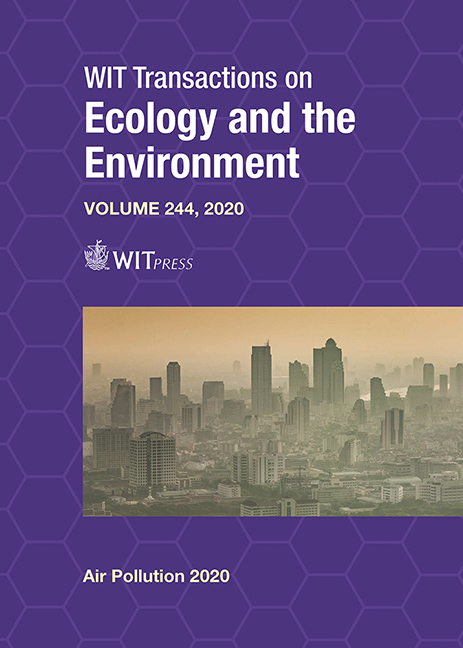MEASUREMENT AND SIMULATION OF ANTHROPOGENIC AND BIOGENIC VOC EMISSIONS FROM DIFFERENT TYPES OF SOURCES
Price
Free (open access)
Transaction
Volume
244
Pages
12
Page Range
113 - 124
Published
2020
Size
367 kb
Paper DOI
10.2495/AIR200101
Copyright
WIT Press
Author(s)
CORINNA BARRACO, MARCO RAVINA, DEBORAH PANEPINTO, MARIACHIARA ZANETTI
Abstract
The aim of this work is to find a methodology in order to distinguish the anthropogenic and biogenic emissions of the following compounds in the atmosphere: Volatile Organic Compounds emitted by an anthropic source (VOC) and Biological Volatile Organic Compounds (BVOC). The implemented methodology consists of two phases: the first one foresees measurements that were taken to simultaneously record the natural and anthropic contribution, the second one foresees the implementation of a Matlab program called bioVOC in order to simulate the emission of only the natural contribution. The study areas chosen are Bardonecchia (a long way from the Turin urban zone) and Settimo Torinese (close to the Turin urban zone), in the Piedmont region of Italy. BioVOC model needs the Leaf Area Index (LAI), the environmental temperature (K), the solar radiation (µmol/J) and the land use with Corine classification as input, and returns the hourly flow emitted by the vegetation (µg/m3h). The validation of the model took place by comparison with SurfPRO, an existing model that achieves the same results as bioVOC but is based on different concepts. Through the measurements made, it was found that there is a much higher concentration of the natural and anthropic contribution in Settimo Torinese than in Bardonecchia (305 ppb versus 135 ppb). On the other hand the BVOC flow simulated with the implemented Matlab model provides completely different results. The biogenic emission simulated in Settimo Torinese is negligible compared to that simulated in Bardonecchia (0.02 µg/m2h versus 2.7 µg/m2h), so the concentration measured with the instrument in Settimo Torinese is mostly attributable to the anthropogenic contribution. In conclusion, the applied method is able to distinguish the natural contribution from the anthropic one.
Keywords
VOCs, modeling, air quality, North Italy





